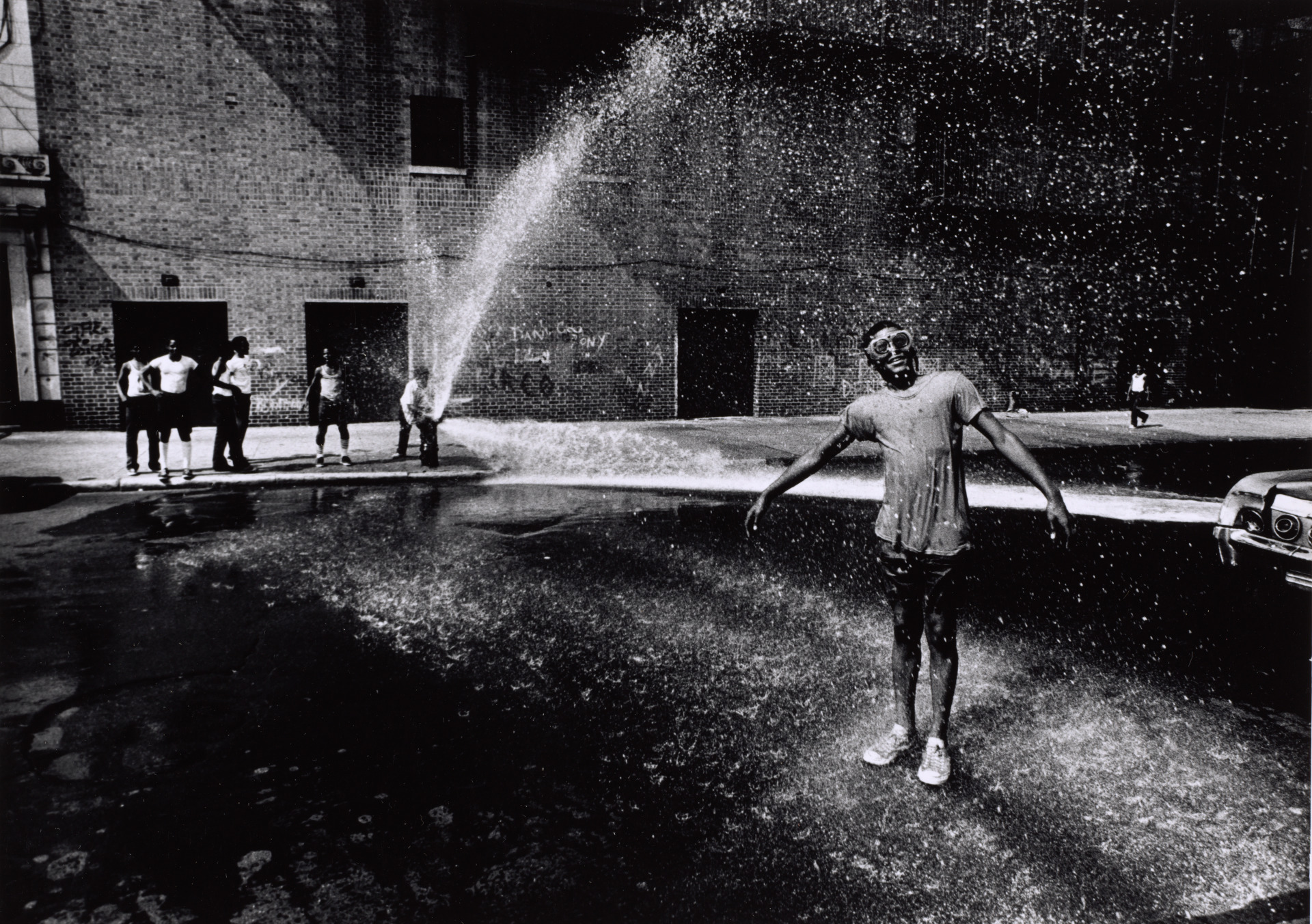
- Magazine Article
- Exhibitions
Black in America
Two photographers—one black, one white—look at life during the civil rights era

“The life of the Negro is still sadly crippled by the manacles of segregation and the chains of discrimination,” observed Dr. Martin Luther King Jr. in 1963. “One hundred years after the abolition of slavery, the Negro lives on a lonely island of poverty in the midst of a vast ocean of material prosperity.” Black in America presents two views of African American daily life during the civil rights era through the photographs of Louis Draper, a black fine art photographer, and Leonard Freed, a white photojournalist. The exhibition premieres a number of recent acquisitions, including the purchase of five photographs by each artist and the generous gift of 17 images by Freed from New York collectors Michael Mattis and Judith Hochberg.
Freed and Draper’s works responded to a shift during the 1960s in the nature and frequency of photographic depictions of African Americans. Governmental social documentary projects of the 1930s included African Americans, but often focused on the poorest blacks and tended to portray them as helpless victims. Starting in the late 1950s, newspapers, magazines, and television news disseminated images of blacks peacefully and bravely demonstrating for civil rights, and of the violent repression of some of those protests. Such coverage emphasized the drama of this struggle but revealed little about the daily life and culture of African Americans. Draper and Freed sought to fill that vacuum.

Draper grew up in segregated Richmond, Virginia, and moved to New York City to study photography in 1957. He became a fine art photographer who supported himself through commercial work, film production, and teaching. The profession helped Draper “to realize that what I felt had worth; that I could make strong statements about the world in visual terms and that often these images did in fact move people emotionally. I had power . . . [which] was given to me for the purpose of sharing.”(1) His personal work, shot mostly in Harlem and around New York City, includes reflective and penetrating portraits, street photography, and abstractions.
Seeking an ongoing forum for dialogue with other photographers, in 1963 Draper cofounded Kamoinge, an important collective of African American photographers that continues to this day. Among the group’s concerns was to define a black aesthetic in photography. “I think it requires an investigation into the nature of what it means to be black, and a translation of that into optical terms,” Draper proposed during a 1972 roundtable with other Kamoinge artists.(2) He explored black and white film’s range of grays and blacks as both formal and expressive devices. Shirtless Boy, New York, circa 1965, sets dark skin against a black background. Sparse highlights economically convey the boy’s personality and mood. His expression and torqued pose suggest pent-up energy and a magnetic presence. Draper masterfully turned a spontaneous shot of a stranger into a penetrating character study.
Freed, born to Jewish working-class parents in Brooklyn, started out to be a painter but ended up a documentary photographer and photojournalist. He worked internationally as a freelance photojournalist from 1961 until 1972, when he joined Magnum, the celebrated collaborative photo agency. In 1961, while covering the construction of the Berlin Wall, Freed photographed an African American soldier guarding the border. Struck by the fact that this man was risking his life to defend a country that limited his own rights, Freed returned to America and undertook a multiyear project photographing black life. He began with African American neighborhoods around New York City, then traveled extensively throughout the South. An outsider, Freed tried to spend time in a community getting to know his subjects, and kept a journal recording their stories and words. The result was an influential book published in 1968, Black in White America, that strove to document a culture and to raise public awareness of the inequalities it had to endure.

As a photojournalist, Freed emphasized storytelling and a sense of place in his pictures. Compare Draper’s character study with Freed’s Harlem, New York, of 1963, which depicts a thin boy flexing his biceps, echoing the sturdier male arm at the right. The angles made by the arms and their relationship to the picture plane produce a compositional torsion similar to that in Draper’s photograph. But while Draper concentrated on the individual’s personality, Freed suggested a narrative of male bonding, competition, and the definition of masculinity and adulthood. Both artists were incredibly talented formalists who put that skill at the service of expression. They also shared a goal: to create dignified depictions of African Americans that portrayed them not as archetypal victims or heroes but as individuals.

The Cleveland Museum of Art is pleased to present this exhibition as part of the year-long, community-wide commemoration of the 50th anniversary of Carl Stokes’s election as mayor of Cleveland. Mayor Stokes and his brother, Congressman Louis Stokes, played key roles in the advancement of the city and the nation during the civil rights movement and beyond.
1. Louis Draper papers, box 1, folder 5; quoted in Gary Saretzky, “Louis H. Draper: An Introduction,” in Louis H. Draper: Selected Photo-graphs, ed. Margaret M. O’Reilly (Rochester, NY: Booksmart Studio, 2015), 1.
2. Tony Eaton, Ray Gibson, Beuford Smith, and Louis Draper, “A Rap on Photography,” Black Creation 3 (Summer 1972): 6; quoted in Saretzky, 11.